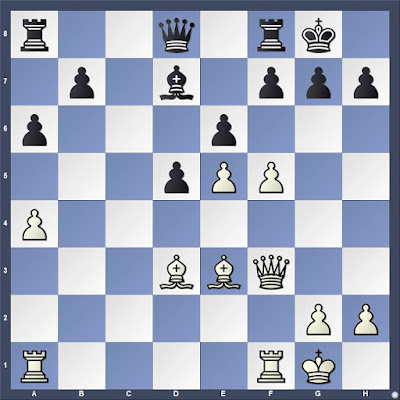White to move
White's king is attacked by the knight--it is in check. The rules require that White move out of check. As nothing can capture the knight, the king must move. There are three squares where the king may move.In a game that I played this morning, my opponent chose the wrong move. It let me force checkmate in two moves. Where did White move? What was Black's response?
This position was presented to my Tuesday afternoon chess club for students in grades K-2. After discussing the position, they were paired and played what may be the first round of a club tournament. As games ended, they were given worksheets with some checkmate in one exercises.
Some of the students found the first worksheet difficult and needed help, as some only just started learning chess at the beginning of this month. They worked in groups. Some students finished three worksheets with six problems each. These worksheets are part of 48 checkmates in one that I assembled from real games several years ago. They are available as a PDF. Use the contact form on the right if interested.
Additional Resources
Solving many checkmate exercises in one, two, and more moves is highly recommended. A beginner who solves hundreds of mates in one will improve quickly.
Chess King’s iOS app, “Mate in One”, is probably the single best resource for those using iPhones and iPads. I believe there are also Android versions. It contains 2434 exercises that are well-selected. The app tracks progress and offers chances to retry missed problems. I raced through all 2434 problems in January while testing resources for my students.
Chess King also has a Mate in Two app, and several other apps with checkmate exercises. All of these offer a small selection with the free download. If you want the full set, it requires an in-app purchase. The most I’ve paid for the full version of one of their apps is $8.
Searching Lichess studies for “mate in one” turns up more than I will count. Because any member can create a study, these will vary in quantity. I created this one from some games played in youth tournaments: “Mate in One”. It has 50 exercises. These are completely free.


























